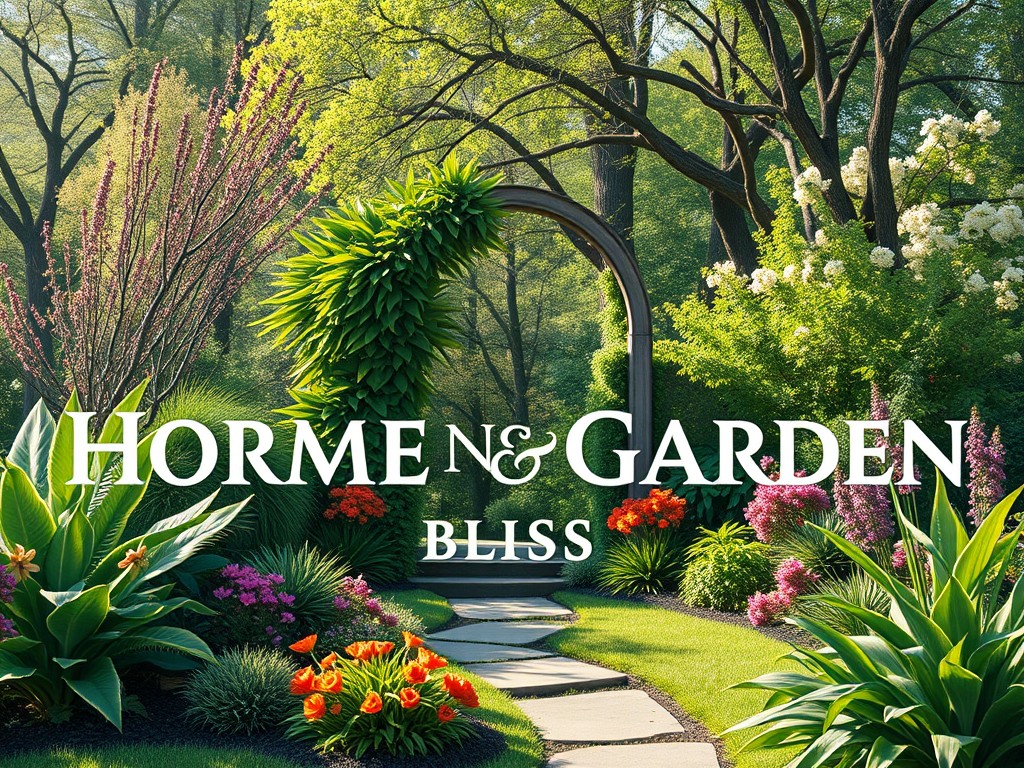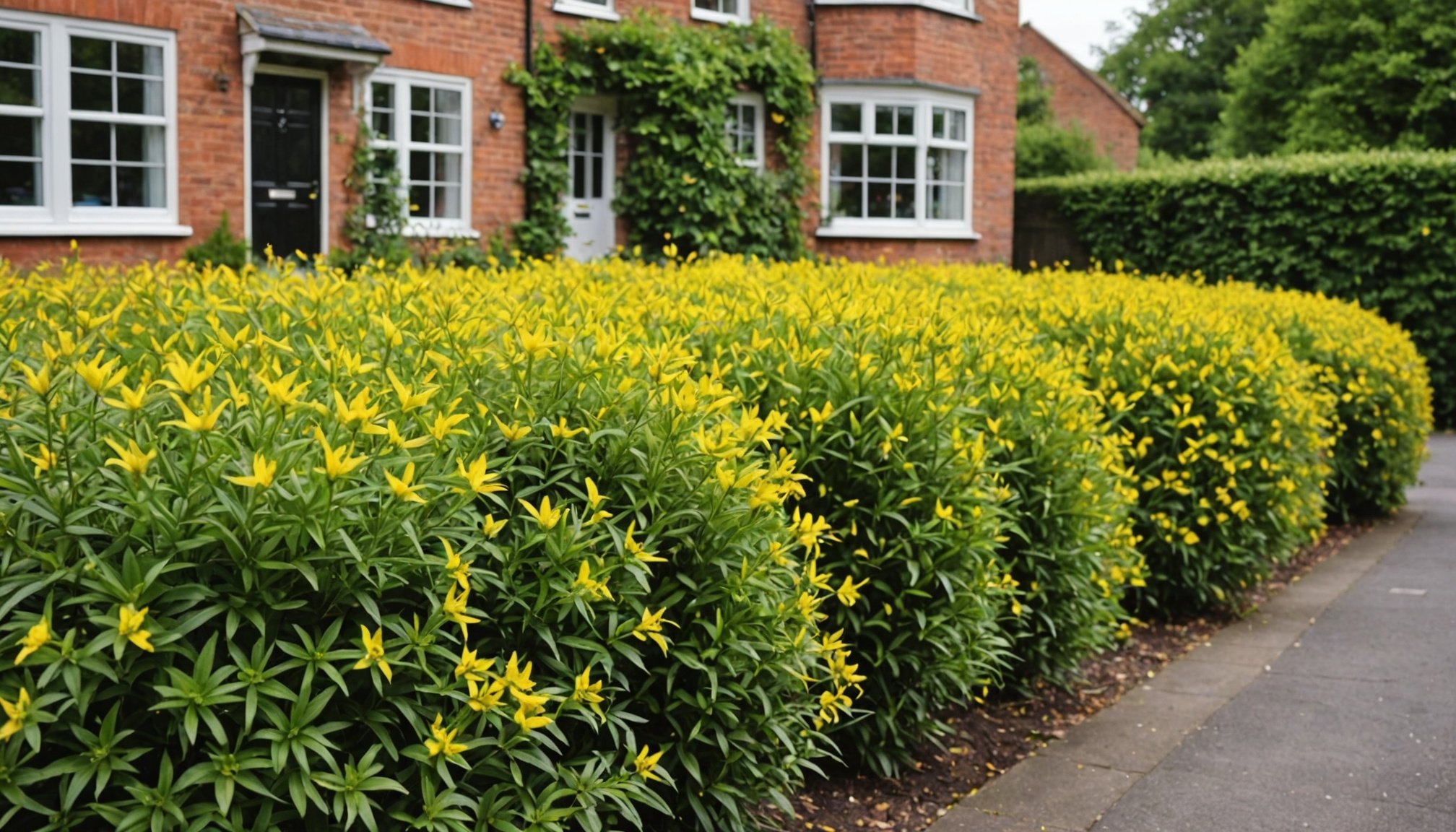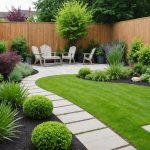Crafting a Stunning Privacy Hedge in Your UK Front Yard: Top Native Plants to Consider
When it comes to enhancing the privacy and aesthetic appeal of your UK front yard, planting a hedge is one of the most effective and beautiful solutions. A well-chosen hedge can not only block unwanted views but also add a touch of natural beauty and tranquility to your garden. Here, we’ll explore the best native plants for crafting a stunning privacy hedge, along with practical tips and insights to help you make the most of your hedging project.
Why Choose Native Plants for Your Hedge?
Native plants are often the best choice for hedging because they are naturally adapted to the local climate and soil conditions. This means they require less maintenance, are more resistant to diseases and pests, and support local biodiversity.
En parallèle : Essential Guidelines for Installing a Biomass Heating System in Your UK Rural Cottage
Benefits of Native Plants
- Low Maintenance: Native plants are accustomed to the local environment, reducing the need for frequent watering, fertilizing, and pruning.
- Disease and Pest Resistance: These plants have evolved alongside local pests and diseases, making them more resilient.
- Biodiversity Support: Native plants provide habitat and food for local wildlife, enhancing the ecological balance of your garden.
- Aesthetic Appeal: Native plants often have unique and attractive features that can add character to your hedge.
Best Native Plants for Hedging in the UK
Here are some of the top native plants that are ideal for creating a stunning and functional hedge in your UK front yard.
Boxwood (Buxus sempervirens)
Boxwood is a favorite evergreen shrub known for its compact and neat appearance. It is highly versatile and can be sculpted into various shapes, making it perfect for topiary designs.
Avez-vous vu cela : Top Insulation Materials for UK Attics: How to Combat Winter Heat Loss Effectively
- Hardiness Zones: 5-9
- Light Requirements: Full sun to partial shade
- Growth Rate: Slow to medium
- Height: Can be trimmed to desired height, typically 3-6 feet tall
- Special Features: Small, dark green leaves; excellent for sculpting and hedges.
Cherry Laurel (Prunus laurocerasus)
Cherry laurel is a fast-growing evergreen shrub that is ideal for creating a dense and privacy-enhancing hedge. It has dark green leaves and produces white flowers in the spring, followed by red berries.
- Hardiness Zones: 6-9
- Light Requirements: Full sun to partial shade
- Growth Rate: Fast
- Height: Can grow up to 10-15 feet tall
- Special Features: Tolerates a range of soils; produces white flowers and red berries.
Yew (Taxus baccata)
Yew is a classic hedging plant in the UK, known for its dark green, needle-like leaves and red berries. It is highly adaptable and can thrive in a variety of conditions.
- Hardiness Zones: 4-8
- Light Requirements: Full sun to deep shade
- Growth Rate: Slow to medium
- Height: Can grow up to 10-20 feet tall
- Special Features: Highly toxic berries; excellent for formal hedges and topiary.
Holly (Ilex aquifolium)
Holly is another native evergreen that makes an excellent hedging plant. It has prickly, dark green leaves and produces bright red berries.
- Hardiness Zones: 5-9
- Light Requirements: Full sun to partial shade
- Growth Rate: Medium
- Height: Can grow up to 10-15 feet tall
- Special Features: Prickly leaves; produces white flowers and red berries.
Detailed Plant Profiles
Here’s a more in-depth look at some of these plants, including their specific needs and benefits.
Boxwood: The Ultimate Versatile Hedge Plant
Boxwood is renowned for its versatility and aesthetic appeal. Here’s what makes it a top choice:
- Sculptural Potential: Boxwood can be shaped into various forms, from spheres and cones to intricate topiary designs.
- Low Maintenance: Once established, boxwood requires minimal care, making it perfect for busy gardeners.
- Year-Round Interest: The small, dark green leaves provide year-round color and texture to your garden.
“As a designer, I love working with boxwood because it lends itself to so many different shapes and styles,” says Thomas Little of Urbangreen Gardens. “It’s also very low maintenance, which is a big plus for many of my clients.”
Cherry Laurel: Fast-Growing and Fruitful
Cherry laurel is a fast-growing option that can quickly establish a dense hedge.
- Fast Growth Rate: Cherry laurel can grow up to 3 feet per year, making it ideal for those who want quick results.
- Adaptable: It tolerates a range of soils and light conditions, from full sun to partial shade.
- Flowers and Berries: It produces white flowers in the spring and red berries in the fall, adding seasonal interest to your garden.
“Cherry laurel is a great choice if you’re looking for a hedge that will grow quickly and provide year-round interest,” advises a local gardening expert.
Planting and Maintenance Tips
To ensure your hedge grows healthily and looks its best, here are some essential planting and maintenance tips.
Choosing the Right Soil
Most hedging plants prefer well-drained soil. Here’s how to prepare your soil:
- Check Drainage: Ensure the soil is not waterlogged. If necessary, add organic matter like compost to improve drainage.
- pH Levels: Different plants have different pH requirements. For example, boxwood prefers slightly acidic to neutral soil (pH 6.0-7.0).
Planting at the Right Time
Autumn and winter are the best times to plant a hedge in the UK.
- Cooler Weather: Planting during the cooler months allows the plants to establish themselves before the heat of summer.
- Reduced Transplant Shock: Cooler weather reduces the risk of transplant shock, helping the plants settle in more quickly.
Watering and Mulching
Proper watering and mulching are crucial for the health of your hedge.
- Regular Watering: Water your hedge plants regularly during the first year after planting. Aim for about 1 inch of water per week.
- Mulching: Mulch around the base of your plants to retain moisture and suppress weeds.
Pruning for Shape and Health
Pruning is essential to maintain the shape and health of your hedge.
- Regular Pruning: Prune your hedge at least twice a year to keep it neat and promote healthy growth.
- Tools: Use sharp, clean pruning tools to prevent spreading diseases.
Comparative Table of Top Native Hedge Plants
Here’s a comparative table to help you choose the best plant for your specific needs:
| Plant | Hardiness Zones | Light Requirements | Growth Rate | Height | Special Features |
|---|---|---|---|---|---|
| Boxwood | 5-9 | Full sun to partial shade | Slow to medium | 3-6 feet | Small, dark green leaves; excellent for sculpting and hedges |
| Cherry Laurel | 6-9 | Full sun to partial shade | Fast | 10-15 feet | White flowers, red berries; fast-growing |
| Yew | 4-8 | Full sun to deep shade | Slow to medium | 10-20 feet | Dark green, needle-like leaves; red berries |
| Holly | 5-9 | Full sun to partial shade | Medium | 10-15 feet | Prickly leaves; white flowers, red berries |
Practical Insights and Actionable Advice
Here are some practical tips and actionable advice to help you create a stunning privacy hedge.
Instant Hedging vs. Planting from Scratch
If you want immediate results, consider instant hedging. However, planting from scratch can be more cost-effective and rewarding in the long run.
- Instant Hedging: Instant hedging involves planting mature plants that are already 3-6 feet tall. This provides immediate privacy but is more expensive.
- Planting from Scratch: Planting smaller plants and allowing them to grow can take time but is often more budget-friendly and allows for better root establishment.
Companion Planting
Companion planting can enhance the beauty and health of your hedge.
- Contrasting Textures: Planting flowers or shrubs with contrasting textures alongside your hedge can add visual interest.
- Beneficial Plants: Planting beneficial plants like lavender or rosemary near your hedge can help deter pests and improve air quality.
“Companion planting is almost as important as the hedge itself,” advises Thomas Little. “It adds layers of texture and interest to your garden and can also help with pest control.”
Creating a stunning privacy hedge in your UK front yard is a rewarding project that can enhance both the beauty and functionality of your garden. By choosing native plants like boxwood, cherry laurel, yew, and holly, you can ensure a low-maintenance yet visually appealing hedge. Remember to plant at the right time, provide proper care, and consider companion planting to make the most of your hedging project.
Whether you’re looking for a fast-growing option like cherry laurel or a versatile sculpting material like boxwood, there’s a native plant that can meet your needs. With the right plants and a bit of care, you can enjoy a beautiful, private garden that thrives year-round.











